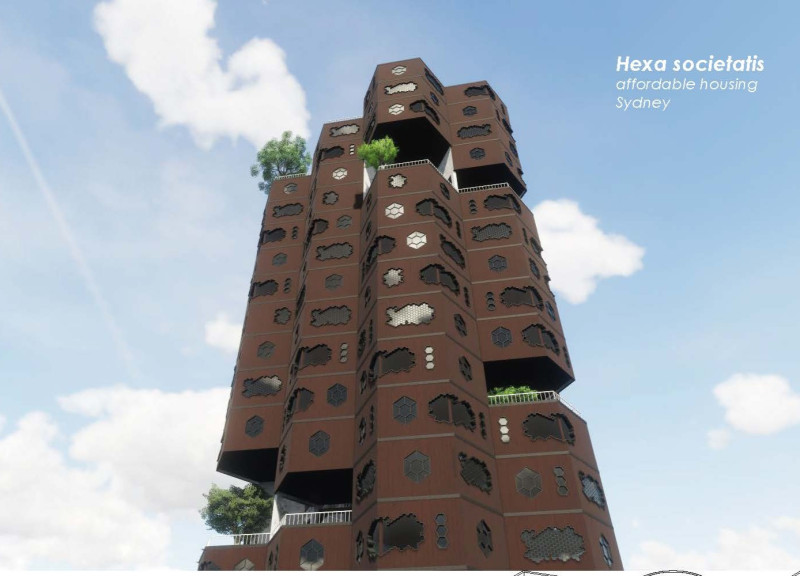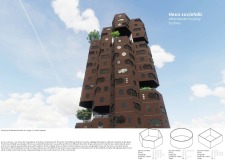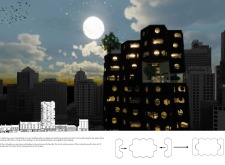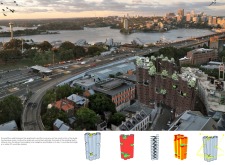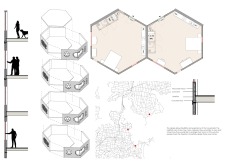5 key facts about this project
## Project Overview
The Hexa Sociatatis housing project, located in Sydney, Australia, was designed by Balthazar Kiewiet de Jonge and Gerrit Knoppers with the intent to address contemporary challenges in affordable housing. It employs a hexagonal modular design that combines aesthetic qualities with practical living solutions, aiming to enhance community interaction among residents.
## Spatial Efficiency and Community Interaction
The design prioritizes efficient use of living space while fostering social engagement. The hexagonal geometry minimizes material usage and maximizes usable areas, allowing for larger living units. Spaces for public interaction, including balconies and communal gardens, are integrated to encourage social activities. This configuration optimizes natural light and ventilation while ensuring a level of privacy for individual units, reflecting a contemporary approach to urban living.
### Material Choices
The project emphasizes sustainable material use, employing recycled wood for internal fittings, concrete for structural stability, and glass for the facade’s perforated panels. This selection not only enhances the building’s aesthetic appeal but also contributes to energy efficiency by facilitating natural light and minimizing reliance on artificial illumination.
### Ecological Design Elements
The design incorporates ecological considerations, utilizing locally sourced materials to minimize transportation emissions. Green terraces are integrated into the building to provide insulation, regulate temperature, and support local biodiversity. The modular nature of the units allows for adaptability, catering to diverse household needs over time and encouraging a sense of ownership among residents.
### Community-Centric Spaces
External common areas are integral to the project, designed for communal activities such as barbecues and informal gatherings. These spaces facilitate the formation of social networks that are essential for urban living, with the layout promoting interaction between residents and blurring the boundaries between private and shared living environments.


